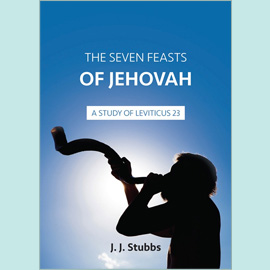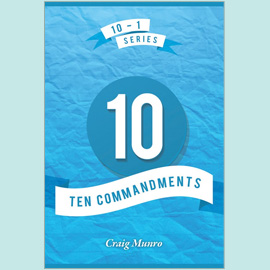First of all, wherever possible interpret the book of Revelation literally, accepting its statements at their face value. If the normal literal grammatical-historical meaning of the words used makes good sense then seek no other sense, for this is the principle followed in understanding the rest of Scripture. It best accords with a believing approach to verbally-inspired Scripture, and is the basis of the Premillennial view of prophecy, which believes that Christ will return to earth to set up His Kingdom for a literal thousand years over the whole world. Increasingly, believing commentators are realising that the judgments and blessings predicted in the book of Revelation could be fulfilled more literally than many of the older commentators supposed possible.
This view accepts all the figures of speech which are normally used in everyday language, and understands them in their usual way. Other views, such as the Amillennial view, which denies that there will be a literal future thousand-year Kingdom of Christ on earth, employ an inconsistent principle of interpreting the prophetic Scriptures, spiritualising many of them without good reason. This is a less believing approach to Scripture, and results in total confusion of interpretation. If Scripture does not really mean what it says, then there is no certainty about any of its statements.
Second, however, remember that the book of Revelation is apocalyptic literature, which reveals future events in symbolical language. But the symbols used in the book always describe literal people, objects, or events as John saw them in his visions, not just abstract ideas. They all represent something, or someone, literally and historically true. Some of these symbols are explained within the book itself, while many others can be understood by comparing their use in other parts of Scripture.
Third, Jesus Christ is the main subject of the book, chiefly as the Lamb, Redeemer, Judge, and coming King. The word "Lamb", here meaning "a young lamb", occurs twenty-nine times in the book.
Fourth, the Throne of God is central to its action and message; there are some forty-six references to the word "throne" in the book. God is asserting His rightful sovereignty through Christ. Scarcely less prominent in the book are sixteen references to the inner temple sanctuary of God, whence the climactic judgments are administered by angels upon the wicked inhabitants of the earth.
Fifth, the three main divisions of the book are indicated in 1.19, namely: the things that you (John) have seen (the Vision of Christ in chapter 1); the things that are (the Letters to the Seven Churches in chapters 2-3); and the things that must happen after these things, that is, after the end of the Church Age (the Future Events predicted in chapters 4-22).
Thus, sixth, the major part of the book, chapters 4-22, concerns events which are still future to us today, that is, after the end of the present Church age. There are indications, both within Revelation and in other New Testament Scriptures, that the Church will be raptured to heaven before the judgments of the Tribulation begin. We are not appointed to face God’s wrath, but to obtain salvation from it. It is likely, although there is not universal agreement on this point, that the twenty-four elders, who appear in chapter 4 before the throne of God and disappear again in chapter 19 just prior to the Marriage of the Lamb in heaven, represent the raptured Church in heaven during the Tribulation. Certainly there is no reference to local churches between the close of chapter 3 and the second half of chapter 22.
Seventh, the overall outline of future events is chronological; but this pattern is interrupted by four parenthetical visions which do not exactly align with the overall chronological sequence of events. These visions portray many of the prominent subjects and persons mentioned in the remainder of the book in more detail than is given in that overall chronological sequence.
Eighth, the vision in chapters 4-5 of the Throne of God and Christ as the Slain, but Risen, Lamb about to open the seven seals of the scroll which contains the title-deed to the earth is the key to understanding the three sequences of judgments that fall on the earth in chapters 6-18. The opening of the seals releases the various judgments by means of which God reclaims the earth for Himself from Satan. Note that the seventh seal becomes the seven trumpet judgments later in the book, while the seventh trumpet judgment becomes the seven vial/bowl judgments in chapter 16. There is thus a climactic and increasingly severe character to the sequence of judgments, which nevertheless gives mankind opportunity for repentance before final destruction takes place.
Ninth, an understanding of the prophecy of Daniel is an important key to understanding the book of Revelation, especially Daniel’s prophecies concerning the World Empires in chapters 2 and 7 of that book, and the crucial prophecy in Daniel chapter 9 of the Seventy Weeks of Years decreed for the future of the nation of Israel. Jerusalem and the nation of Israel do feature prominently in many sections of the book. As Romans chapters 9-11 indicate, Israel does have a prominent place in God’s future purposes for the world, distinct from that of the New Testament Church which is God’s parallel heavenly people. The three-and-a-half year period of the Great Tribulation derives directly from the last, seventieth, week of Daniel’s prophecy in 9.24-27. Jerusalem is presented as God’s city, whereas Babylon is presented as man’s and Satan’s city. Also, whereas Babylon is the false and unfaithful bride, or rather harlot, the Bride of the Lamb is Christ’s true and faithful Bride, by inference the Dispensational Church of true believers.
Finally, the book of Revelation was always an open book, that is, meant to be understood, unlike Daniel, which was sealed up until "the time of the end" according to Daniel 12.4. Now we are in a good position to understand both books to a very large extent. Revelation 1.3 says that there is a blessing for those who read and keep the things written in it. Since we are probably living in a period quite near to the time of the end, it is important that we try to understand, and live in the light of, its prophecies.
Summary of the Main Message of Revelation
Revelation is the Apocalypse, the unveiling of Jesus Christ in all His present and future glory and power as the risen Lamb of God, the Redeemer of believers, the rightful Judge of all unbelievers, and the Coming King of kings and Lord of lords in God’s world. God gave this revelation to His Son for Him to pass on to us through the Apostle John, to encourage us as His servants in our present trials for Christ’s sake, and to warn the unbelieving world of the certainty of coming judgment, unless they repent. The book reveals the ultimate triumph of God through Christ over all the final attempts of Satan and his henchmen to usurp power and worship from God and to destroy His believing people. The sequence of increasingly severe judgments culminates in the personal intervention of Jesus Christ in glory at His second coming to judge His enemies and rule the earth for a thousand years, which is the so-called millennial reign of Christ. After this and the final rebellion of men against God, the present heavens and earth are destroyed by fire, the final judgment of all unbelievers takes place, and God creates a new heaven and a new earth. The prophecy ends with a message from Christ Himself to all believers of the present Church age, promising them His imminent return for them, and challenging them to live in the light of that coming. Finally, it is salutary to examine ourselves as members of New Testament local churches in the light of Christ’s penetrating assessment of the seven surely representative and typical local churches in chapters 2-3. An honest and sincere assessment of our lives and testimonies as seen here by our Beloved Lord and Saviour should radically change and humble us before Him! Prophetic Scripture, rightly understood and applied, is eminently practical, relevant, and spiritually valuable to us today!
Concluded.









